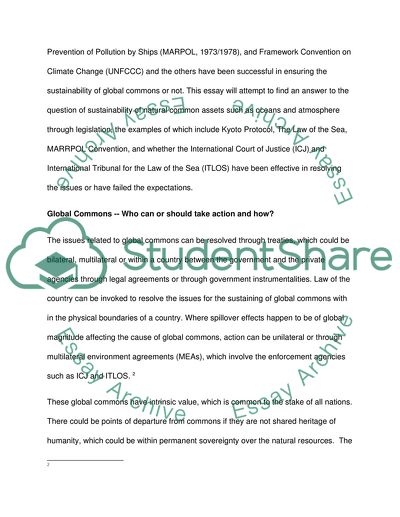Cite this document
(International Environmental Law and Sustainability of Global Commons Assignment - 1, n.d.)
International Environmental Law and Sustainability of Global Commons Assignment - 1. Retrieved from https://studentshare.org/law/1750808-international-environmental-law-drawing-on-specific-legislative-examples-eg-convention-on-biological-diversity-kyoto-protocol-etc-critically-discuss-whether-international-environmental-law-ensures-the-sustainability-of-global-commons
International Environmental Law and Sustainability of Global Commons Assignment - 1. Retrieved from https://studentshare.org/law/1750808-international-environmental-law-drawing-on-specific-legislative-examples-eg-convention-on-biological-diversity-kyoto-protocol-etc-critically-discuss-whether-international-environmental-law-ensures-the-sustainability-of-global-commons
(International Environmental Law and Sustainability of Global Commons Assignment - 1)
International Environmental Law and Sustainability of Global Commons Assignment - 1. https://studentshare.org/law/1750808-international-environmental-law-drawing-on-specific-legislative-examples-eg-convention-on-biological-diversity-kyoto-protocol-etc-critically-discuss-whether-international-environmental-law-ensures-the-sustainability-of-global-commons.
International Environmental Law and Sustainability of Global Commons Assignment - 1. https://studentshare.org/law/1750808-international-environmental-law-drawing-on-specific-legislative-examples-eg-convention-on-biological-diversity-kyoto-protocol-etc-critically-discuss-whether-international-environmental-law-ensures-the-sustainability-of-global-commons.
“International Environmental Law and Sustainability of Global Commons Assignment - 1”, n.d. https://studentshare.org/law/1750808-international-environmental-law-drawing-on-specific-legislative-examples-eg-convention-on-biological-diversity-kyoto-protocol-etc-critically-discuss-whether-international-environmental-law-ensures-the-sustainability-of-global-commons.


